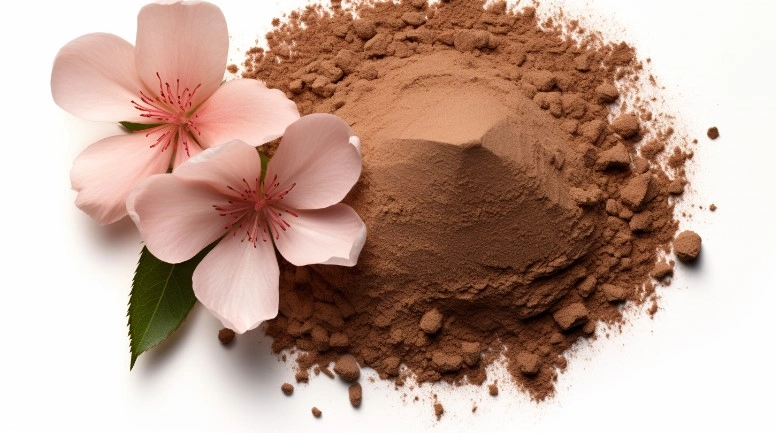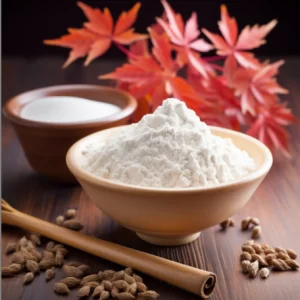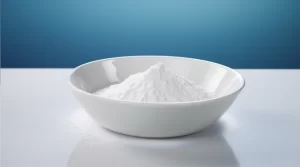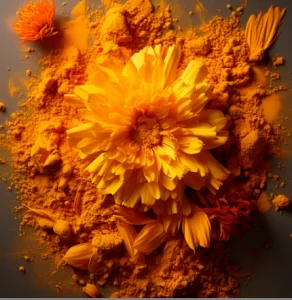Usos y beneficios de los extractos de Shilajit Extract

Es una sustancia negra y pegajosa que segregan principalmente las rocas del Himalaya. Se conoce como "jugo de roca" en la cultura tibetana y es conocido en la medicina ayurvédica por su rico contenido en minerales. Se cree que esta secreción de las montañas de gran altitud mejora la fuerza física, rejuvenece y favorece la salud en general.
¿Qué es el extracto de shilajit?
Se cree que se ha formado a través de la descomposición gradual de material vegetal (incluido el trébol blanco) y diversos mohos, facilitada durante un largo período de tiempo (posiblemente siglos) por una variedad de microorganismos. Sin embargo, el origen exacto del extracto de shilajit sigue siendo objeto de debate. Algunos proponen procesos geológicos, como la fusión de elementos metálicos como el oro, la plata, el cobre y el hierro, mientras que otros especulan con orígenes biológicos, incluidas las heces de animales. A pesar de estas diferentes teorías, la mayoría de la literatura sugiere que las plantas en descomposición fueron la fuente primaria del Hilarium.
Se compone principalmente de ácido húmico, ácido fúlvico, dibenzo-alfa-piranona, proteínas y más de 80 minerales, y tiene una variedad de componentes químicos. El humus, incluido el ácido fúlvico, es el producto de descomposición y es el principal compuesto bioactivo que se encuentra en el extracto de shilajit, que representa alrededor del 60%-80% de la composición total. El ácido fúlvico es una molécula pequeña que se absorbe fácilmente en el intestino. Es conocido por sus potentes efectos antioxidantes y antiinflamatorios.
Además, la dibenzo-alfa-piranona, también conocida como DAP o DBP, es un compuesto orgánico que también proporciona actividad antioxidante. Otras moléculas presentes en la planta son los ácidos grasos, los triterpenos, los esteroles, los aminoácidos y los polifenoles, y se han observado variaciones en función de la región de origen.
El uso tradicional del extracto de Shilajit
A lo largo de la historia, el Hilaiji ha desempeñado un papel vital en sistemas médicos tradicionales como el Ayurveda y la medicina tibetana. En la medicina ayurvédica, el extracto de Shilajit se considera una medicina natural eficaz con muchos beneficios. Se denomina "rasayana", que significa "rejuvenecimiento", y puede prevenir enfermedades y mejorar la calidad de vida.
Tradicionalmente, se utilizaba para la fuerza física. En sánscrito, "Shilajit" significa "destructor de debilidades y conquistador de montañas". También es conocido por promover la longevidad, combatir el envejecimiento y prevenir enfermedades gracias a sus propiedades antioxidantes y antiinflamatorias, lo que lo convierte en una piedra angular de la práctica ayurvédica.
Su potencial terapéutico ha sido reconocido y utilizado durante siglos. En Nepal y el norte de la India, es un alimento básico en la dieta y se consume regularmente por sus beneficios para la salud. Entre sus usos tradicionales más comunes se encuentran la digestión, la salud del tracto urinario, el tratamiento de la epilepsia, el alivio de la bronquitis crónica y la lucha contra la anemia. Además, sus propiedades adaptógenas ayudan a aliviar el estrés y la vitalidad.
Los médicos ayurvédicos la utilizan para tratar la diabetes, enfermedades de la vesícula biliar, cálculos renales, trastornos neurológicos, irregularidades menstruales, etc. Los beneficios que se le atribuyen son enormes y reflejan su perdurable reputación como valioso recurso natural.
La eficacia de Hilaizhi se ha demostrado científicamente
Cada vez son más las investigaciones en diversos campos que respaldan las aplicaciones beneficiosas del extracto de shilajit.
Extracto de Shilajit Energía y función mitocondrial
A medida que envejecemos, nuestras mitocondrias (centrales energéticas celulares) pierden eficacia en la producción de energía (ATP), lo que puede provocar diversos problemas de salud, acelerar el envejecimiento y favorecer el estrés oxidativo. Este declive suele estar asociado a la falta de ciertos compuestos naturales, como la coenzima Q10 (CoQ10), un potente antioxidante, y la dibenzo-alfa-piranona (DBP), un metabolito de las bacterias intestinales. Se cree que la combinación de Hilaizon (que contiene DBP) y coenzima Q10 mejora la producción de energía de las células y las protege de los daños causados por moléculas nocivas. Esta combinación resulta prometedora para mejorar la producción de energía celular, con el potencial de favorecer la salud general y la vitalidad a medida que envejecemos.
En un estudio de 2019 que analizó los efectos del cilex suplementario sobre la fuerza muscular y la fatiga, hombres activos tomaron 250 mg, 500 mg de Cilex o un placebo diariamente durante ocho semanas. Los resultados mostraron que los participantes que tomaron la dosis más alta de Cilex mostraron una mejor retención de la fuerza muscular después de un ejercicio con fatiga en comparación con los que tomaron la dosis más baja o el placebo. Sin embargo, se necesitan estudios más amplios en humanos para verificar estos resultados.
Extracto de Shilajit Función cognitiva
Se están ampliando las investigaciones sobre los efectos del Hilazic en funciones cognitivas como la memoria y la atención. La enfermedad de Alzheimer (EA) es una dolencia debilitante para la que no existe cura conocida, y los científicos están recurriendo al Hilai, extraído de las montañas de los Andes, por su potencial para proteger el cerebro. En un estudio reciente, los investigadores analizaron cómo afectaba el extracto de shilajit a las células cerebrales en cultivos de laboratorio. Descubrieron que ciertos extractos de la planta pueden promover el crecimiento de las células cerebrales y reducir la agregación y el enredo de las proteínas tau dañinas, una característica clave de la EA.
Otro estudio se centró en el ácido fúlvico, el principal compuesto activo del extracto de shilajit. Los estudios han demostrado que el ácido fúlvico previene la formación de proteínas tau anormales en cultivos de laboratorio y las descompone una vez formadas. Estos resultados sugieren que el ácido fúlvico tiene potencial para tratar la EA. Aunque estos resultados sugieren que la planta tiene potencial para proteger y reparar el cerebro, aún se necesitan más estudios en seres humanos vivos.
Extracto de Shilajit Salud del corazón
Es conocida por sus propiedades antioxidantes y también se considera que tiene beneficios potenciales para la salud cardiovascular. En un estudio realizado con voluntarios sanos, la ingesta diaria de 2 gramos de Cilazeta durante 45 días no tuvo efectos significativos sobre la presión arterial o la frecuencia del pulso en comparación con el placebo. Sin embargo, se observaron reducciones significativas en los niveles séricos de triglicéridos y colesterol, junto con mejoras en los niveles de colesterol HDL ("bueno"). Además, mejoró el estado antioxidante de los participantes, aumentando los niveles en sangre de enzimas antioxidantes clave como la superóxido dismutasa (SOD) y las vitaminas E y C. Estos resultados sugieren que el contenido en ácido fúlvico de la hierba tiene una potente actividad antioxidante, así como posibles efectos hipolipemiantes y protectores del corazón.
Un estudio de 2022 en el que participaron mujeres posmenopáusicas (un grupo con mayor riesgo de sufrir enfermedades cardiacas) demostró que la suplementación con Hilatosis reducía los marcadores de estrés oxidativo y aumentaba el glutatión (una potente molécula antioxidante). Se necesitan más investigaciones para dilucidar completamente el mecanismo de acción del extracto de Shilajit como terapia potencial para la salud del corazón.
Extracto de Shilajit Fertilidad masculina
Nuevas investigaciones sugieren que la hierba puede tener beneficios potenciales para la fertilidad masculina. En un estudio clínico de 2015, los investigadores evaluaron los efectos del extracto de shilajit sobre los andrógenos en hombres sanos de entre 45 y 55 años. Los participantes recibieron 250 mg de cilazeum o un placebo dos veces al día durante 90 días. Los resultados mostraron aumentos significativos de los niveles de testosterona total, testosterona libre y dehidroepiandrosterona (DHEA) en comparación con el placebo. En comparación con el placebo, el Extracto de Shilajit mostró mejores propiedades de síntesis y secreción de testosterona, lo que puede deberse a su ingrediente activo dibenz-alfa-piranona (DBP). Otros estudios han descubierto que el Cilacetum mejora la producción y la motilidad de los espermatozoides en hombres con un bajo recuento de espermatozoides.
Extracto de Shilajit Apoyo inmunitario
También se ha descubierto que tiene un efecto positivo sobre el sistema inmunitario y la inflamación. El sistema del complemento es una parte importante del sistema inmunitario, que ayuda a combatir las infecciones y a eliminar las sustancias nocivas del organismo. Sin embargo, si este sistema se vuelve demasiado activo, puede provocar daños en los tejidos. Varios tratamientos pretenden controlar este proceso, y la reparación del sistema del complemento se ha propuesto como estrategia para tratar las enfermedades inflamatorias. Los estudios han demostrado que el Cilacetum interactúa con el sistema del complemento para reforzar la inmunidad innata y regular las respuestas inflamatorias, lo que produce efectos de refuerzo inmunitario.
El cilacidum también tiene efectos antiinflamatorios y se ha demostrado que reduce los niveles del marcador inflamatorio proteína C reactiva hipersensible (hs-CRP) en mujeres posmenopáusicas con osteoporosis.
Cómo utilizar el extracto de Shilajit
La seguridad es lo primero y es importante elegir productos de calidad cuando se utiliza el Extracto de Shilajit.
En primer lugar, asegúrese de consultar a su profesional sanitario de confianza antes de poner en práctica un nuevo régimen de suplementos, especialmente si padece alguna enfermedad preexistente o está tomando medicamentos.
Se presenta en diversas formas, como polvos, cápsulas y resinas purificadas. Las dosis oscilan entre 200 y 2.000 mg al día. Lo más habitual es tomar 500 mg al día (divididos en dos dosis). Empezar con una dosis baja y aumentarla gradualmente con el tiempo puede ser una buena opción prudente para evaluar cómo se siente el cuerpo.
Dado que la composición química exacta de Heliella puede variar según la región geográfica, los efectos sobre el organismo también pueden variar. Lo mejor es utilizar productos estandarizados que indiquen el contenido de ingredientes activos, incluidos el ácido fúlvico y el DBP. Por ejemplo, PrimaVie es un extracto de Shilajit purificado y estandarizado para fines de salud nutricional.
Las pruebas realizadas por terceros en laboratorios acreditados y verificados y los certificados analíticos pueden ayudar a los consumidores a verificar la calidad. Compruebe siempre la etiqueta para asegurarse de que el producto no contiene alérgenos ni aditivos innecesarios.
Siguiendo estas pautas y utilizando la Ceratoxina de forma responsable, podrá incorporarla con seguridad a sus hábitos saludables para aprovechar sus beneficios potenciales.
Backvita
Teléfono: +86 (029) 8187 2325
Correo electrónico: [email protected]



